Slate 60: Donor Bios
The largest American charitable contributions of the year.

1. Stanley F. and Fiona B. Druckenmiller—$705 million to the Druckenmiller Foundation. Stanley Druckenmiller, 56, founded Duquesne Capital Management in Pittsburgh. Fiona Druckenmiller, 47, is a former investment-portfolio manager at the Dreyfus Corporation in New York. The Druckenmillers gave $705 million to their eponymous foundation in New York. Established in 1993, the family foundation primarily supports medical research, education, and efforts to fight poverty. Last year the foundation awarded a $100 million grant to New York University's Langone Medical Center to create a neuroscience institute. A trustee of the medical center since 2006, Fiona Druckenmiller said in a written statement that she and her husband believe advancements in neuroscience and stem-cell research will one day benefit and lengthen many people's lives.
"Every family is affected in one way or another by brain disorders or brain aging. An aging brain can lead to problems with memory, learning, sleep, feelings of well-being, not to mention all the ways the brain mediates other aspects of health," she said. "The brain is one of the last great frontiers in medicine and advances in related research could help both the individual and society function at a higher level."
Including this most recent grant, the Druckenmillers have given Langone Medical Center about $146 million through both grants from their foundation and personal donations. In past years, the foundation has supported medical research with grants to the New York Stem Cell Foundation and cancer-research programs. The Druckenmillers' support for education and anti-poverty programs includes a $25 million gift the couple gave in 2006 to the Harlem Children's Zone, a New York organization that serves poor children and their families. Stanley Druckenmiller serves as chairman of the group's board of trustees. They have also made substantial donations over the years to Bowdoin College (Stanley Druckenmiller's alma mater), Human Rights Watch, the Robin Hood Foundation, and the Spence School, a private girls' school.
Along with his work with Harlem Children's Zone, Stanley Druckenmiller serves on the board of the Children's Scholarship Fund in New York and the investment committee for Bowdoin College in Brunswick, Maine. He also serves on the board of overseers of Memorial Sloan-Kettering Cancer Center in New York. Fiona Druckenmiller serves on the boards of the Spence School and the American Museum of Natural History, both in New York, and the Parrish Art Museum in Southampton, N.Y. She is also a member of the Leadership Council of the New York Stem Cell Foundation.
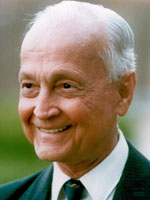
2. John M. Templeton—$573 million to the John Templeton Foundation. Templeton was an international investor and a pioneer in mutual-funds management who died in July 2008 at 95. He bequeathed $573 million in cash and stock to the John Templeton Foundation in West Conshohocken, Pa. He established the foundation in 1987 to support research into the relationships between science and religion, and spirituality and health, and to support programs that promote free enterprise and character development. The foundation held nearly $822.4 million in assets at the end of 2008 and awards about $70 million in grants each year. With this large infusion of money from the bequest, the foundation is now among the 25 wealthiest grant-makers in the country, with more than $1.6 billion in assets.
The foundation awarded grants last year to a wide array of nonprofit organizations including the Duke University Center for Spirituality, Theology, and Health in Durham, N.C.; the Faraday Institute for Science and Religion at St. Edmund's College at the University of Cambridge; the Foundational Questions Institute, a physics and cosmology organization in New York; the Institute for American Values' Thrift and American Culture Project, in New York; the Positive Psychology Center at the University of Pennsylvania; the Program on Indian Economic Policies at Columbia University; and the SEVEN Fund, a Cambridge, Mass., group focused on finding entrepreneurial solutions to poverty.
Templeton was born in Winchester, Tenn., and started his career on Wall Street in 1937 He created a number of lucrative investment funds. In 1972 he created the Templeton Prize for Progress Toward Research or Discoveries About Spiritual Realities, which was designed to show that advances and achievement in work related to spirituality were as important as advancements in science, economics, and other disciplines. He stipulated that the monetary value of the Templeton Prize must always exceed that of the Nobel Prizes, and at a current value of approximately $1.6 million, the Templeton Prize is the world's largest annual award given to a living person. Past winners have included the Rev. Billy Graham, the late Aleksandr Solzhenitsyn, and the late Mother Teresa. In 1992, Templeton sold his Templeton Fund to the Franklin Group for $440 million and devoted the remainder of his life to his philanthropy.

3. William H. (Bill) III and Melinda F. Gates—$350 million to the Bill & Melinda Gates Foundation. Bill Gates is a co-founder and chairman of Microsoft, and Bill and Melinda are co-chairmen of the foundation they established in 2000. The money will go toward construction costs for the foundation's new headquarters and campus in downtown Seattle. The new facility is expected to open in 2011.
With a fortune valued at $50 billion, Bill Gates is the wealthiest American, according to Forbes. In 2004, he and Melinda pledged approximately $3.3 billion to their foundation, which they have been steadily paying in annual installments. So far the couple has paid nearly $2.7 billion toward the commitment, including an approximately $34.5 million payment in 2009. The $350million for the new building was a separate donation and not part of their annual payments on the earlier commitment.
Since they started the foundation, the Gateses have given and pledged a total of $21 billion to their foundation. The grant-maker works to alleviate extreme poverty and provide health care to people in developing countries and to expand educational opportunities in the United States. It also supports human-service programs for disadvantaged youths and families in the Pacific Northwest.
4. Michael R. Bloomberg: $254 million to various arts, human-service, public-affairs, and other groups. Bloomberg, 67, the mayor of New York, founded Bloomberg LP, a financial-data and news-service company. He gave approximately $254 million to 1,358 nonprofit organizations, five of which are working to reduce and prevent deaths and injuries from automobile crashes. The remaining 1,353 groups support the arts, human services, public-affairs, and other causes.
Bloomberg would not disclose exactly how much money he gave to each of the five organizations—the Association for Safe International Road Travel, the International Bank for Reconstruction and Development, the Johns Hopkins Bloomberg School of Public Health, the World Health Organization, and the World Resources Institute for Sustainable Transport—in 2009, but the undisclosed payments were a portion of a $125 million pledge he announced in 2009. A sixth group, the Global Road Safety Partnership, is also participating in the program but did not receive any money until this year. The six organizations will work over five years to devise an international program to benefit 10 developing countries that have large numbers of deaths resulting from traffic accidents.
Among the other organizations Bloomberg supported were the American Heart Association; the Art Institute of Chicago; the Ballet Theatre Foundation in New York; the Capital Area Food Bank in Washington; Fordham University; the Harlem United Community AIDS Center; the National Sept. 11 Memorial & Museum at the World Trade Center; the Nature Conservancy; the New York Stem Cell Foundation; the Oregon Food Bank; Saint Vincent Catholic Medical Centers of New York; Starlight Children's Foundation; the Tourette Syndrome Association; and numerous other organizations in New York and elsewhere.
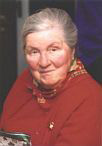
5. Louise Dieterle Nippert—$185 million to the Greenacres Foundation. Nippert's fortune derives primarily from Procter & Gamble stock. Her late husband, Louis B. Nippert, was the great-grandson of James A. Gamble, a co-founder of the household- and personal-products company in Cincinnati. The Nipperts were also principal owners of the Cincinnati Reds baseball team in the 1970s; Louise Nippert remains a minority owner of the team today.
She gave $185 million in stock to the Greenacres Foundation in Cincinnati, which she and Louis Nippert established in 1988, converting their estate and gardens into a cultural and environmental-education center. Louis, a lawyer, died in 1992.
Of the total she gave to her foundation, Nippert earmarked $100 million to endow the foundation's programs and $85 million to establish the Louise Dieterle Nippert Musical Arts Fund, which will support classical music in Cincinnati.
The fund will distribute money annually to three arts groups. The Cincinnati Symphony Orchestra will receive 75 percent, approximately $3 million a year, so that it can maintain its size of approximately 90 musicians and its full 52-week performing season. The Cincinnati Opera will receive 12 percent, about $500,000 a year; and the Cincinnati Ballet will receive 5 percent, roughly $200,000 a year from the fund. The annual payments to the ballet and opera companies are solely to ensure that both can afford to hire the orchestra for performances, and that the ballet company can continue to use the city's Music Hall as its home theater. The remaining 8 percent will support other arts groups in the Cincinnati area that promote classical music.
The Greenacres Foundation held $28.2 million in assets in 2008, according to its tax filings. This new infusion of money pushes the organization's assets to more than $213 million. Nippert grew up in Cincinnati and graduated from the University of Cincinnati in 1934. A trained singer, she studied voice and piano at the university's College-Conservatory of Music and performed with the Cincinnati Symphony Orchestra in 1957.

6. George Soros—$150 million to the Fund for Policy Reform and Central European University. Soros is chairman of Soros Fund Management, a New York firm that manages hedge funds, and is the founder of the Open Society Institute, a foundation with headquarters in New York. He donated $100 million in cash to establish the Fund for Policy Reform, which will support advocacy efforts designed to reduce climate change. The fund will make annual $10 million awards over the next 10 years to the Climate Policy Initiative, a San Francisco think tank that advises governments throughout the world on environmental policies.
In addition, Soros pledged $50 million to Central European University in Budapest to create the Institute for New Economic Thinking. The institute was established as a response to the financial crisis and to challenge traditional economic thought and will provide research grants, establish a scholarly journal, and organize conferences. Its first symposium is scheduled for April and will convene economic scholars to examine how the financial turmoil of the last year affects regulatory policies. Soros said in a news release that he decided to support the institute because "the entire edifice of global financial markets has been erected on the false premise that markets can be left to their own devices. We must find a new paradigm and rebuild from the ground up."
Soros, who helped found Central European University in 1991, plans to give the university $5 million a year for the next 10 years to complete his commitment to the new institute. His philanthropy is rooted in his personal history. Born in Budapest in 1930, Soros defected in 1946, escaping to England as the Soviets seized control of his country. He graduated from the London School of Economics in 1952 and began working at an investment bank. He moved to the United States in 1956, where he eventually established a private investment firm that became the Quantum Fund, one of the first hedge funds. It was through Quantum that Soros accumulated most of his wealth, which Forbes has pegged at $13 billion. He established the Open Society Institute in 1993 to support the development of democratic institutions throughout Central and Eastern Europe and in the former Soviet Union. The organization made at least $185 million in grants in 2009, including $100 million to help people in Eastern Europe and the former Soviet Union who are struggling because of the global economic downturn, and a $50 million matching grant to the Robin Hood Foundation in New York, to aid needy people in that city. To receive all the grant money, the Robin Hood Foundation must raise close to $100 million over the next two years.
Open Society also made a $35 million grant to help low-income families in New York state purchase back-to-school supplies and clothing for their children. The organization worked with the state of New York and the U.S. Department of Health and Human Services to give out about $200 each to approximately 850,000 children receiving public assistance in the state. A portion of this grant money—$5 million—is going to the Open Society Institute Baltimore to provide services to Baltimore residents hurt by the recession.
7. Eli and Edythe L. Broad—$105.2 million to the Broad Foundations. Eli Broad is founding chairman of KB Home Corp., a house builder, and of SunAmerica, a financial-services company, both of which are located in Los Angeles. The Broads have pledged $105.2 million—of which $65.2 million has been paid—to their foundations, which support civic programs, contemporary-art museums, efforts to improve elementary and secondary public-school education, and medical and scientific research.
The foundations awarded several grants last year. The largest was a $20.8 million grant to the Broad Center for the Management of School Systems in Los Angeles for the center's Broad Superintendents Academy, a management-training program to prepare future leaders of urban public-school systems, and the center's Broad Residency in Urban Education, which places executives with backgrounds unrelated to education into two-year, paid management posts in urban schools.
In addition, the foundations awarded a $5 million grant to the California Institute of Technology in Pasadena and the University of California- Los Angeles to establish the Joint Center for Translational Medicine. The center's research will seek new therapies for debilitating diseases; its first research project will investigate a new treatment for late-stage melanoma.
The foundations gave a $2.5 million grant to two public charter schools in New York. Uncommon Schools will receive $1.5 million over three years to establish new schools in Brooklyn and Manhattan, and for facilities and operations. The Success Charter Network will receive the remaining $1 million of the grant money over two years to support its four Harlem Success Academies and to open new schools in the New York area.
The foundations also gave the Aldine Independent School District in Houston a $1 million grant for college scholarships for graduating high-school seniors.
In 2008 the Broads, through their Eli and Edythe Broad Foundation, gave $30 million to the then-struggling Museum of Contemporary Art in Los Angeles, of which $15 million was a challenge grant to replenish the museum's severely diminished endowment, and another $15 million to support exhibitions at the museum over five years.
Under the terms of the challenge portion of the grant, the foundation promised to match up to $15 million the museum raised from other donors. By last summer, the museum had raised more than $26 million from its board of trustees and other donors.
8. J. Ronald and Frances Terwilliger—$102 million to Habitat for Humanity International. Ronald Terwilliger, 69, is chairman of Trammell Crow Residential, a Dallas real estate company. The Terwilligers pledged $100 million to Habitat for Humanity International in Americus, Ga. The charity will receive the money upon Ronald Terwilliger's death.
Ronald Terwilliger, chairman of Habitat's board of directors, said approximately $70 million of the commitment will establish a fund to enable the charity to offer small loans to people in developing parts of Africa, Asia, Central America, and Eastern Europe so they can make basic improvements to their homes (such as building a cement floor where there was once only a dirt surface or replacing an inadequate roof). He said the remaining $30 million will create an endowment to support the organization's main goal of building houses for needy people in the United States and abroad. Terwilliger said he made the pledge to highlight the often overlooked importance of helping poor working families have a decent place to live, and that he hoped other philanthropists will make housing a giving priority.
"My belief is while people are very interested in giving to health and education, there are so many who need a good home to live in," he said. "It seems to me we ought to concentrate more on sheltering and feeding and clothing people first."
The Terwilligers also gave the organization $895,877 in miscellaneous donations—including an airplane—last year. In addition, the couple gave a total of more than $1.1 million to 16 other nonprofit groups, including Stand Up for Kids and the Terwilliger Family Foundation, both in Atlanta; the Urban Land Institute Foundation in Washington; and other education, environmental, human-services, and medical-research groups. Ronald Terwilliger serves on the boards of the Enterprise Foundation, the Urban Land Institute, and the U.S. Naval Academy, his alma mater.
9. William P. Clements Jr.—$100 million to the University of Texas Southwestern Medical Foundation. Clements, 92, founded Sedco, an oil and gas drilling corporation, and served two terms as governor of Texas. He pledged $100 million to the University of Texas Southwestern Medical Foundation to support the university's medical center. Clements, who placed no restrictions on how the money should be used, plans to pay the entire commitment over the next four years.
From the time he founded Sedco in 1947 to the time he retired as chairman of the company in 1985, Clements had a substantial political career. He served as deputy secretary of defense from 1973-77. He served as governor of Texas from 1979-83 and again from 1987-91. In between, he oversaw the 1984 merger of Sedco with Schlumberger Limited, an 80-year-old company that originated in Paris. Today he raises cattle on his ranch near Forney, Texas. Although not an alumnus of the University of Texas, Mr. Clements served on the university system's board of regents from 1996-2007 and has been involved with the institution since the 1960s.
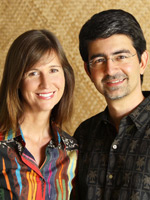
10. Pierre and Pam Omidyar—$92 million to the Hawaii Community Foundation, HopeLab, and Humanity United. Pierre Omidyar founded eBay. Pam Omidyar is chairwoman of HopeLab, a nonprofit group that develops technology to help chronically ill children. The Omidyars, both 42, pledged $50 million to the Hawaii Community Foundation in Honolulu. The money will support various programs, including one designed to help people who are struggling because of the recession and another to help pay for new buildings for kindergarteners and first-graders at the Punahou School in Honolulu. The couple paid about $20 million toward the pledge last year. The Omidyars are former residents of Hawaii and returned to live in Honolulu more than a year ago.
In addition, the Omidyars gave a total of $41 million to HopeLab and to Humanity United, an organization that supports efforts to fight slavery and mass atrocities around the world. Pam Omidyar founded both groups. She also pledged $1 million to the University of Hawaii Foundation for the university's Confocal Microscopy Laboratory at the Hawaii Institute of Marine Biology. The money will pay for a new microscope to study the physiological activities of living cells in coral-reef ecosystems.
11. Paul G. Allen—$85 million to the Allen Institute for Brain Science, the Paul G. Allen Family Foundation, Experience Music Project, and the Science Fiction Museum. Allen, 57, founded Vulcan, an investment company in Seattle, and helped establish Microsoft. He gave $42 million to the Allen Institute for Brain Science in Seattle for neuroscience and genomics research programs, such as the Allen Brain Atlas projects, an effort to map gene activity in the brains of both mice and humans. He founded the institute in 2003. In addition, he donated approximately $31 million to the Paul G. Allen Family Foundation to support arts and culture programs, as well as social-service organizations. The grant-maker gave out $15 million in grants in 2009. The largest of those include $400,000 to the Washington State STEM Education Foundation, in Richland, for its Delta High School program, in Kennewick, Wash., to help teachers gain additional skills in the areas of science, technology, engineering, and mathematics; $250,000 to the Seattle Economic Development Association for the King County Low Income Credit Union Project; $200,000 to the Oregon Food Bank to purchase food; $150,000 to the Hopa Mountain Foundation in Bozeman, Mont., for literacy and youth programs in rural and tribal areas; and $75,000 to the Alaska Native Heritage Center in Anchorage for an exhibit.
Allen also gave about $12 million to the Experience Music Project, a museum he established in 2000 that is dedicated to rock music, and to the Science Fiction Museum, which he started in 2003. Both are in Seattle.
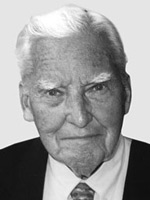
12. Raymond A. Rich—$76.8 million to Marist College. Rich, who died in 2009 at age 97, headed oil companies, publishing businesses, and financial institutions. Rich bequeathed a 60-acre estate valued at approximately $65 million, along with $10 million cash, to Marist College. The donor requested that the college use the estate, known as Payne Mansion, for a leadership institute that the college has named for Rich. The estate, where he Rich resided, is located in Esopus, N.Y., across the Hudson River from Marist. The donor earmarked the cash portion of the bequest to endow the new institute, which will focus on teaching students to develop the communication, interpersonal, and social skills needed to lead global corporations and other types of organizations. He also left the college a separate gift of $600,000 to endow academic scholarships for male students who play on the college's football team. He previously gave $400,000 toward similar scholarships before he died.
Although he did not attend the college, Mr. Rich became acquainted with Marist after he purchased the estate from the college's founders in 1986. The institution's emphasis on teaching students the importance of ethics and humility were the key factors that attracted Rich's attention, said Dennis J. Murray, president of Marist. During his lifetime, Rich gave the college about $2.5 million but did so anonymously.
In addition, he left $1.2 million to Benedictine Health Foundation in Kingston, N.Y. He placed no restrictions on how the money should be used. Rich had been a patient at Benedictine Hospital and had donated to the foundation consistently since 1985.
13. Alfred M. and Mary Swain Wood—$75.9 million to Centre College, Harvard University, and Berea College. Alfred Wood was a former sales executive at Procter & Gamble and a cattle rancher in Oklahoma. Mary Swain Wood was a sales representative for Pearson Scott Foresman, a publisher of children's books in Lebanon, Ind. Wood, who was 100 when he died in 1997, and his wife, Mary, who was 99 when she died in 2008, bequeathed $16.4 million to Centre College in Danville, Ky., to endow scholarships. Mary Wood grew up in Danville.
The couple also left $15.3 million to Harvard University, from which Alfred Wood graduated in 1921, and $10.7 million to Berea College in Kentucky. Alfred Wood grew up near Berea, in Wildie, Ky., where his father operated a grocery store and post office. In 1914, he graduated from the Berea Academy, a college-preparatory school that was then run by Berea College. He joined the U.S. Navy, serving as a fighter pilot in World War I and later as commander of Mediterranean naval operations during World War II. In between the two wars he earned a degree in economics at Harvard. Alfred Wood went on to work for Procter & Gamble for almost 40 years, first in the corporation's Kansas City, Mo., office, and later in its Dallas offices. He and Mary Swain met in Dallas when they both lived at the Stoneleigh Hotel. They married in the late 1950s when he was 60 and she was 50. It was the first marriage for both. Their additional bequests include $7.6 million to Austin College, in Sherman, Texas; $7.6 million to Maryville College, in Tennessee; $5.7 million to Texas Presbyterian Foundation in Irving; $4.7 million to Highland Park Presbyterian Church in Dallas; $4.6 million to Presbyterian Village North in Dallas; and $3.3 million to Saint Joseph-Berea Hospital, in Ky.
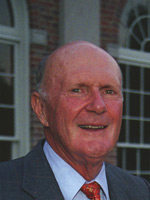
14. Julian H. Jr. and Josie Robertson—$66.1 million to the Auckland Art Gallery. Julian Robertson, 77, founded Tiger Management Corp., a hedge-fund group in New York. He and his wife, 66, pledged a collection of 15 works of art valued at $66.1 million to the Auckland Art Gallery in New Zealand. The collection includes paintings and works on paper by Paul Cézanne, Henri Matisse, Piet Mondrian, and other well-known artists of the late-19th and early-20th centuries.
Although five of the pieces were on temporary loan to the gallery in November for a special exhibition, the museum will permanently receive the 15 artworks upon the Robertsons' deaths. The 12 paintings and three works on paper represent only a portion of the Robertsons' entire art collection of mostly modern works.
The Robertsons are Americans who lived in New Zealand for about six months in 1979 and fell in love with the country. They went on to develop golf resorts and lodges in that country and own two wineries there. They have also established a scholarship program to enable New Zealand students to attend Duke University and the University of North Carolina. The Robertsons have donated additional gifts over the years to other New Zealand organizations, including the Matauri Bay School and the University of Auckland Foundation. In December, Julian Robertson was appointed an Honorary Knight Companion of the New Zealand Order of Merit for his services to the country's business and philanthropy.
Julian Robertson serves on numerous nonprofit boards in New York, including those of the Cancer Research Institute, Children's Scholarship Fund, and the Environmental Defense Fund. He is also a trustee emeritus of the Lincoln Center for the Performing Arts and Rockefeller University. Josie Robertson serves on the boards of the Boys' Club of New York, the Breast Cancer Research Foundation, Memorial Sloan-Kettering Cancer Center, and the Women's Committee of the Central Park Conservancy, among other New York groups. She is also the chairwoman of the Women's Council of Classroom Inc., a New York organization that works to improve the math and reading skills of middle- and high-school students.
15. Patrick Soon-Shiong and Michel B. Chan—$65 million to Saint John's Health Center Foundation. Dr. Soon-Shiong is a surgeon who founded Abraxis BioScience, a pharmaceutical-development company in Los Angeles. Chan is an actress. Dr. Soon-Shiong and his wife have pledged $65 million to Saint John's Health Center Foundation in Santa Monica, Calif. Of the total, the health center plans to use $55 million for research at its John Wayne Cancer Institute and to support joint research projects with other institutions. The remaining $10 million will be used to recruit physicians and scientists.
The couple previously pledged $35 million to the center in 2007. Soon-Shiong and Chan have paid a total of $45 million toward both pledges and plan to pay the remainder over the next five years, said officials at Saint John's.
Soon-Shiong, who serves on the health center foundation's board of trustees, made his fortune by developing Abraxis, a cancer-treatment drug. Forbes magazine pegged his wealth at $4 billion last year.
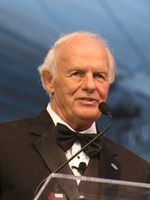
16. T. Denny Sanford— $60.7 million to various programs to prevent childhood diseases, the College of Teacher Education and Leadership at Arizona State University, and the University of Minnesota. Sanford is chairman of First Premier Bank, Premier Bankcard, and United National Corporation, all of which are in Sioux Falls, S.D. Sanford, 74, pledged $35 million—of which $10 million has been paid—to establish programs to prevent childhood diseases. Although he declined to disclose the name of the organization to which he gave the money, through a spokesman Sanford indicated that the recipient's programs have not yet been finalized or announced and will not be in place for at least another year. He plans to pay the remainder of the pledge over the next three years.
In addition, Sanford pledged $18 million to the College of Teacher Education and Leadership at Arizona State University, for unrestricted use, and will make payments toward the pledge over the next six years in increments of $3 million a year. He also pledged $6 million to the University of Minnesota for a new sports stadium and for the university's athletic hall of fame. He has paid $1.5 million toward that pledge and plans to pay the remainder at a rate of $500,000 a year.
His other donations include a $1 million pledge to support the World Golf Foundation in St. Augustine, Fla.; a $400,000 pledge, of which $133,333 has been paid, to Arizona State University Foundation for a program to benefit youths; and a separate pledge of $100,000 to the foundation for the university's Connect program, an online discussion forum for parents of the institution's students. He has paid $25,000 toward that pledge and plans to pay the remainder in $25,000 increments over the next three years. Sanford also gave $100,000 to City Blossom 2, a community-events project in Sioux Falls; $90,000 to Teach for America; and $6,000 to the Burnham Institute for Medical Research, in La Jolla, Calif., for spinal-cord injury research.
Although the Slate 60does not count or include payments made on past pledges, in 2009, one of the worst financial years on record, Sanford completed payment six years early on a $400 million pledge he made in 2007 to Sanford Health Foundation in Sioux Falls, to establish pediatric clinics in the United States and abroad and to support pediatric health care and medical research.
"In these uncertain times, it seemed good and right to take care of this for my own peace of mind and to help Sanford Health to be confident in continuing their momentum on the various research and pediatric health initiatives as they gain the benefit of receiving funds earlier than anticipated," said Sanford after he announced the payment in April.
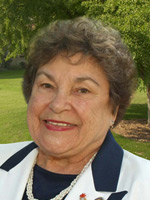
17. Dolores Jordan—$52 million to Ag One Foundation, Children's Hospital & Research Center Oakland, and St. Rose Hospital. Jordan's wealth comes primarily from the recent sale of her family's Four Bar J cattle ranch, in Dublin, Calif. She and her late husband, Hanabul (Bud) Jordan, also owned the FL Construction company, in Hayward, Calif. Jordan, 81, gave $29.4 million in cash to the Ag One Foundation, which supports California State University at Fresno's College of Agricultural Sciences and Technology. Of that total, $20 million will be used to construct the college's new building, and the remainder will endow research programs within the college, which has been named for the Jordan family. When she gave the donation, Jordan stipulated that it was her husband's wish that the money go toward those two purposes. He died in 2002.
Neither Jordan attended the university. Instead, they learned about it through one of the GMC motor-home rallies they frequently attended, where they met and became friends with fellow motor-home enthusiasts Bob and Dorothy Glim. At one such rally in the late 1980s, Bob Glim, a retired professor of agricultural economics at the college and an adviser to Ag One, gave a talk about the university's agricultural program and shared some of the produce grown on the university's farm. Inspired by what he heard that day, Bud Jordan began to learn more about the university and, in 1995, handed Glim a check for $20,000 made out to the Ag One Foundation.
Despite that donation, the Jordans had never set foot on the agricultural college's campus or on its farm, but between their construction work in the primarily agricultural area of California and Bud's brother Lowell's work on the cattle ranch the three owned, the Jordans were well-aware of the importance of farming. From that point on, Dolores, Bud, and Lowell Jordan, who died in 2005, began donating to the college. Before this most recent gift, the three had given a total of $130,000 to the institution.
In addition, Jordan gave $9.8 million apiece to Children's Hospital & Research Center Oakland, in California, and St. Rose Hospital, in Hayward, Calif.; and $1 million each to the Alzheimer's Association, in Chicago; the American Cancer Society, in Atlanta; and the American Heart Association, in Dallas.
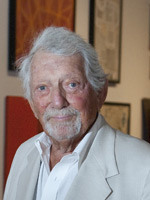
18. Robert Gumbiner—$50.03 million bequest to the Museum of Latin American Art and the Robert Gumbiner Foundation. Gumbiner was a physician who founded FHP International Corp., a health-insurance company in Fountain Valley, Calif. He sold FHP to PacifiCare Health Systems in 1996 for approximately $2 billion. Gumbiner, who was 85 when he died in January 2009, bequeathed nearly $28.5 million in cash to the Museum of Latin American Art, in Long Beach, Calif. Of the total, he directed $25 million to endowment and stipulated that only the earnings of the endowment could be used to offset the museum's operating expenses, and that 10 percent of those earnings must be reinvested in the endowment. The remaining $3.5 million is unrestricted.
Gumbiner founded the museum in the 1990s but began to conceive it in the early 1960s, when he first traveled to Latin America and started collecting post-World War II art from the region.
"It became apparent that it was still somewhat obscure and underappreciated in the United States," Gumbiner wrote in a museum statement. "A museum whose focus would be the study and exhibition of contemporary Latin American art was an institution long overdue and one that would be exciting to develop."
In the early 1990s, Gumbiner swung into action. He purchased an old, 20,000-square-foot roller-skating rink and connected it to a former silent movie studio to form the museum's original exhibition spaces. He worked over the next 10 years with a team of museum consultants, designers, and architects to redesign the space and contributed more than $40 million in personal donations and money from his foundation to complete the project. The museum opened in 1996. That same year, Gumbiner retired from the health-insurance business and devoted the rest of his life to the museum and his philanthropy.
Gumbiner also left $21.5 million in cash and real estate to endow the Robert Gumbiner Foundation, also in Long Beach. Included in that amount is his collection of contemporary Latin American art and Oceanic artworks, valued at close to $2.6 million. Gumbiner specified that at least half the earnings from the foundation's endowment must be used to support the Museum of Latin American Art. Museum officials said the money generated by both the museum's and the foundation's endowments are expected to provide 35 percent to 40 percent of the museum's operating costs, which now stand at about $3.6 million annually. In addition to his bequests, Gumbiner also established an agreement with the museum that the foundation will pay for the care and display of his art collection.
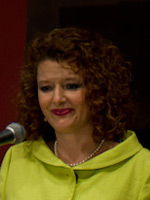
19. Caroline Amplatz—$50 million to the Minnesota Medical Foundation. Amplatz is a lawyer in Golden Valley, Minn. She pledged $50 million to the Minnesota Medical Foundation to support the University of Minnesota Amplatz Children's Hospital. The hospital is scheduled to open in 2011. The pledge will be paid over 12 years.
Amplatz made the commitment to honor her father, Kurt Amplatz, a retired professor of radiology who taught at the University of Minnesota for 42 years. Dr. Amplatz invented numerous medical devices and procedures, including the Amplatzer, a device used to repair congenital heart defects, which provided another option to open-heart surgery for some patients.
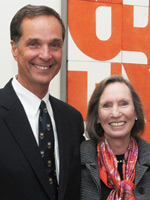
19. John W. and Susan G. Jackson—$50 million to Yale University. John Jackson is a retired chief executive of the Celgene Corp., a biopharmaceutical company in Summit, N.J. Susan Jackson is a published poet. The Jacksons pledged $50 million to Yale University to establish a global-affairs institute. Within the new institute, which has been named for the Jacksons, the money will support four new tenured professorships and at least four fellowships for experts in international affairs. The donation will also pay for a summer internship program, financial aid, and career counseling for Yale students interested in working in diplomacy or with international agencies.
The Jacksons declined to provide details about their schedule for paying the pledge, but wrote in an e-mail response to questions about the gift that they hope it inspires students to "pursue careers in diplomacy and public service." John Jackson graduated from Yale in 1967 with a bachelor's degree in political science. The couple serves on the university's President's Council on International Activities at Yale.
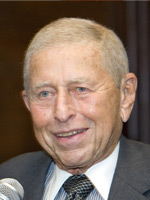
19. Ronald P. Stanton—$50 million to NewYork-Presbyterian Hospital. Stanton founded Transammonia, a New York company that distributes fertilizers, petroleum gas, and petrochemicals. He pledged $50 million to NewYork-Presbyterian Hospital, for a cancer-care program at the hospital and at its sister institution, Weill Cornell Medical Center. Details about a payment schedule were not available, but hospital officials said the money will be used to improve the institutions' radiation-therapy capabilities, to buy new state-of-the-art equipment, and to create a blood-infusion center for cancer patients.
Stanton serves on the hospital's board of trustees, and the new cancer program will be named for him.
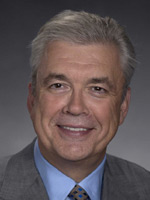
22. William W. and Nadine M. McGuire—$48 million to the Florida Museum of Natural History. William McGuire is a physician and a former chief executive of UnitedHealth Group. The McGuires gave a donation valued at approximately $41 million to the Florida Museum of Natural History. The donation includes a cash gift and a collection of more than 2 million butterfly and moth specimens, about 2,000 of which are now extinct. William McGuire would not disclose the amount of the cash portion of the gift, which will pay for cases to house and display the collection and support students and scientists studying the butterflies and moths, but described it as substantial.
The museum is displaying the collection to the public at its McGuire Center for Lepidoptera and Biodiversity, so named for the McGuires in recognition of the $7.2 million in gifts they gave the museum from 2000 to 2002. The museum is associated with the University of Florida, and the McGuires' collection will be used to help researchers at the university and elsewhere better understand the connections between butterflies and moths and biodiversity and environmental change.
William McGuire first began collecting butterflies as a child, but he and Nancy became serious collectors in the 1970s, marveling at the ways in which scientists could learn about environmental change from tracking and studying the winged insects. Since then, he said, it has been important to the couple to preserve as many Lepidoptera (moths and butterflies) specimens as possible. Through their donation, the museum and the university "will be positioned to help educate people on not just the natural sciences, but also on biodiversity of the planet, and the linkage of all of these things so we can plan our future," said Dr. McGuire. In addition to the donation to the museum, the McGuires gave the university roughly 40,000 books, journals, and other documents related to moths, butterflies, and biodiversity, many dating back to the 1700s.
The McGuires, who live in Wayzata, Minn., also gave a total of approximately $7 million in cash to Minnesota groups, including a donation to the University of Minnesota for scholarships; another gift to the Minnesota Zoo for an educational program for third-graders; and gifts to the Guthrie Theater and the Walker Art Center, both in Minneapolis.
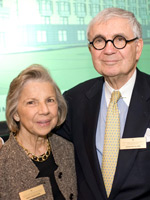
23. John and Mary Pappajohn—$47.3 million to the University of Iowa Foundation and the Des Moines Art Center. John Pappajohn founded Equity Dynamics and Pappajohn Capital Resources, both venture-capital companies in Des Moines. John Pappajohn, 81, and his wife, Mary, 76, pledged $26.4 million—of which $13.6 million has been paid—to the University of Iowa Foundation. The Pappajohns have directed the money to construct the university's new Institute for Biomedical Discovery, which will be named for the couple, and to support the institute's programs.
A 1952 graduate of the university, Pappajohn has served on the foundation's board of directors since 1989. He and Mary Pappajohn plan to pay off the remainder of the pledge in cash and stock by the end of 2013. He said they hope their donation helps the university consolidate all its biomedical-research programs into one center and results in additional medical and technology breakthroughs.
The couple also gave eight works of art valued at about $13 million to the Des Moines Art Center, on whose board Mary Pappajohn serves. The donation, which includes pieces by Deborah Butterfield, Sol LeWitt, Ugo Rondinone, and other contemporary artists, is in addition to a group of 16 art works, valued at about $25 million, the Pappajohns previously gave the museum in 2008. Many of the pieces will be displayed in a newly opened sculpture park the museum named for the couple.
In addition, the Pappajohns gave a total of $7.9 million to a variety of nonprofit organizations, including Iowa State University's Pappajohn Center for Entrepreneurship, in Ames; the National Gallery of Art, in Washington; the Walker Art Center, in Minneapolis; and other groups.
Pappajohn was born in Greece and came to the United States with his family when he was an infant. A self-made venture capitalist, he began to accumulate wealth in the 1960s, and since 1961, he and Mary Pappajohn have been donating to charity.
"We've found that giving gets easier as you move through life," he said. "I believe that if you can get new college graduates to make even a modest gift of $10 as soon as they leave school, they're far more likely to develop a lifelong habit of giving."
Pappajohn serves on the board of the University of Iowa Foundation, as well as the boards of Anatolia College, in Thessalonika, Greece; the Hirshhorn Museum and Sculpture Garden, in Washington; the Horatio Alger Association, in Alexandria, Va.; and several other organizations. Mary Pappajohn serves on the Walker Art Center's Board of Directors.
24. Lawrence J. Ellison—$46.9 million to the Ellison Medical Foundation. Ellison, 65, the founder of Oracle, gave $46.9 million to the Ellison Medical Foundation for biomedical research. He created the foundation in 1997 to support research on age-related diseases and disabilities, stem-cell research, study into the aging process, and other scientific areas of study that might not be supported by other sources. Last year the foundation made about $40 million in grants, and has supported approximately 300 research institutions since it was created.
25. Oprah Winfrey—$41.4 million to theOprah Winfrey Foundation and Oprah's Angel Network. Winfrey, 56, the chairwoman of Harpo Entertainment and host of The Oprah Winfrey Show, gave $40 million to the Oprah Winfrey Foundation to support education, as well as programs for women and children in the United States and abroad. She established the foundation in 1995.
In addition to the donation to her foundation, Winfrey gave nearly $1.3 million to Oprah's Angel Network, which she created in 1998 to encourage other celebrities and fans to donate money to charity. Winfrey pays the organization's administrative costs so that all money donated to the network from others can go to charitable causes. She also gave a total of $123,880 to the Oprah Winfrey Leadership Academy Foundation and other nonprofit groups. The Leadership Academy Foundation is an organization she established to support the Oprah Winfrey Leadership Academy for Girls-South Africa, in Henley on Klip. The private school opened in 2007.
26. Jon L. Stryker—$41.3 million to the Arcus Foundation and the Arcus Operating Foundation. Stryker is an architect and heir to the Stryker Corporation fortune. The medical-products company was founded by his grandfather Homer Stryker, a surgeon who invented the mobile hospital bed. He gave $34.3 million to the Arcus Foundation, which has offices in Kalamazoo, Mich., and New York. The money will support the foundation's two grant-making priorities: combating discrimination against gay, lesbian, bisexual, and transgender people, and ensuring the survival of great apes and their habitats.
Stryker, who lives in Kalamazoo, established the foundation in 2000 and serves as its president. Since its founding, the organization has made grants totaling approximately $160 million. In December, for example, the foundation awarded $2.1 million to Kalamazoo College to establish the Arcus Center for Social Justice Leadership. Stryker graduated from the college in 1982. In addition, Stryker gave nearly $7 million to the Arcus Operating Foundation, which finances Arcus' administrative work, and a total of $46,075 to other nonprofit groups.
27. Thomas F. Steyer and Kat Taylor—$40 million to Stanford University. Steyer founded Farallon Capital Management, a hedge fund in San Francisco. Steyer and Taylor pledged $40 million to Stanford University for the TomKat Center for Sustainable Energy. No details were available about a payment schedule. Both are graduates of Stanford: Steyer earned a master's degree in business administration in 1983, and Taylor earned a master's in business administration and a law degree in 1986. Steyer serves on the university's board of trustees.
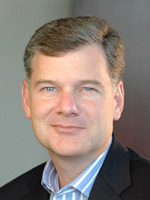
28. Mark W. and Stacey Miller Yusko—$36 million to the University of Notre Dame. Mark Yusko founded Morgan Creek Capital Management, an international investment management firm with headquarters in Chapel Hill, N.C. Stacy Yusko is the director of the Chapel Hill-Carrboro Meals on Wheels.
The Yuskos, both 46, pledged $35 million to the University of Notre Dame for a merit-scholarship program. No details about a payment schedule were available. The couple, who are both Notre Dame alumni, said they had been planning the scholarship gift for many years. Originally, they planned to pledge the money anonymously because they wanted the university to name the scholarship program for the Rev. Theodore Martin Hesburgh, a Catholic priest who served as the university's president from 1952-87, and who the Yuskos say "transformed" Notre Dame. "We went to speak to him to ask his permission to use his name for the program and he agreed, with one caveat: that we name the program the 'Hesburgh-Yusko Scholars Program.' Another example of why Father Ted is who he is," said the couple, in a written statement.
In addition to the pledge, Mr. and Ms. Yusko gave $25,000 to the university, their annual contribution to the President's Circle fund.
Mark Yusko graduated from Notre Dame in 1985 with a bachelor's degree in biology, and Stacy Yusko graduated in 1986 with a bachelor's degree in English. The couple also gave a total of about $1 million to a variety of nonprofit organizations, including the Morehead-Cain Foundation, in Chapel Hill; the North Carolina Museum of Art, in Raleigh; St. Thomas More Catholic Church, in Chapel Hill; the Tiger Foundation, in New York (which was established by Julian H. Robertson Jr., who is No. 14 on the Slate 60); the University of North Carolina, where Stacy Yusko earned a master's degree in library science in 2003; the University of Chicago, where Mark Yusko earned a master's in business administration in 1987; and other groups.
Mark Yusko serves on the boards of Carolina Meadows, a nonprofit retirement community in Chapel Hill; MCNC, a technology and economic-development organization in Research Triangle Park, N.C.; and the Weaver Foundation, in Greensboro, N.C. Stacy Yusko serves on Notre Dame's Advisory Council for the College of Arts and Letters and the boards of Carolina Performing Arts, in Chapel Hill, and the North Carolina Museum of Art.
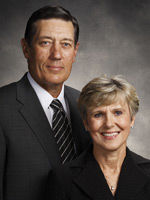
29. Joseph A. and Linda J. Chlapaty—$33.9 million to the University of Dubuque and Marietta College. Joseph Chlapaty is chairman of Advanced Drainage Systems, a pipe manufacturer in Hilliard, Ohio. Linda Chlapaty works as a court-appointed advocate for children in Franklin County, Ohio.
The Chlapatys have pledged $30 million, of which $10 million has been paid in stock, to the University of Dubuque, in Iowa. They plan to pay the remainder over the next two years. The couple has directed $20 million of the gift for the university's new performing-arts center, while $4.5 million will support three professorships: one in mathematics, one in science, and another in theology. The remainder of the gift will go toward campus maintenance and renovations, with $2 million allotted for new housing for students. The couple also gave the university an additional $60,000 last year for its annual fund and for athletic programs.
In addition, the Chlapatys pledged $2.6 million to Marietta College, in Ohio, to renovate a sports stadium, and pledged an additional $500,000 for the college's library. (The couple's son, Keith, attended Marietta and played football there.) They also gave $750,000 to Nationwide Children's Hospital, in Columbus, Ohio, for research.
The couple said in a written statement that "we prefer to give during our lifetime so that we have the privilege of seeing the impact of our contributions." A 1968 graduate of the University of Dubuque, Joseph Chlapaty is chairman of its board of trustees. He also serves on the boards of KIPP: the Knowledge Is Power Program, in San Francisco; Marietta College; and Nationwide Children's Hospital.
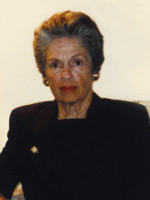
30. Elizabeth Beckwith Nilsen—$31 million to Chatham Hall, a girls' boarding school in Virginia. Nilsen's fortune came from investments her father, Laurance Beckwith, a stockbroker, made in American Home Products, the company that would eventually become Wyeth Pharmaceuticals. Nilsen, who was 92 when she died in 2006, bequeathed approximately $31 million in stock to Chatham Hall. While Nilsen stipulated in her will that she wanted the school to use the money to establish an endowment, she placed no restrictions on which programs the endowment should support and said the school could use the endowment's earnings for any purpose. The bequest is the largest donation Chatham Hall has ever received. Its board of trustees is in the process of deciding which programs the income from the endowment will support.
Nilsen entered the school in her junior year as a member of the class of 1931, but it is unclear whether she graduated. Nilsen married the late R.A. Nilsen, who was an executive at a foam-rubber company. She began donating sporadically to the school in 1973. Her gifts were small; over her lifetime, they totaled just $137,396. Chatham Hall officials say she told them in 2001 that she was leaving money to the school in her will, but say they had no idea the bequest would be so large. School officials believe her $31 million bequest to Chatham Hall was the only portion of Nilsen's estate left to a nonprofit institution.
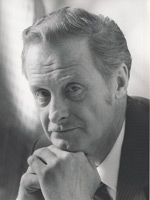
31. David Eddings—$30 million to Reed College and National Jewish Health. Eddings, the author of many fantasy novels who died at 77 in June 2009, bequeathed approximately $20 million in cash and stock to Reed College, in Portland, Ore. Eddings stipulated that his money go toward financial aid for students and to support faculty salaries. The college plans to direct slightly more than 60 percent of the money to financial aid, and the remainder will endow a professorship in English and support the cataloging and maintenance of Eddings' archives, which he also left to the college. A 1954 graduate of Reed, Eddings had never given money to the institution during his lifetime and was not particularly involved with the college, said Hugh E. Porter, a Reed official. "We spoke frequently on the phone, but David was very private about what he was planning," said Porter of the bequest.
In addition to his gift to Reed, Eddings also left $10 million to National Jewish Health, in Denver, to support new approaches to the diagnosis, treatment, and prevention of childhood asthma. This gift was at the suggestion of Eddings' wife, Leigh, who helped write many of his later novels; she suffered from asthma for most of her life and died in 2007. The organization plans to use $7.5 million of the money to endow a treatment program for children suffering from the condition, said Ron Huddleston, the group's assistant vice president for development.
Eddings was diagnosed with dementia about six months before he died. He and his wife had no children and the two charitable bequests made up the bulk of their estate.
The author of more than 25 works of fiction, Eddings, who composed all his novels in long hand, was best known for his Belgariad and Mallereon series of books. It was not until 1973, after publishing his first novel, High Hunt, a drama about a group of deer hunters, that Eddings became acquainted with the fantasy genre. After reading J.R.R. Tolkien's Lord of the Rings, he noticed that the novel was in its 73rd printing. Inspired by the realization that such novels could be lucrative, he devoted the rest of his career to writing fantasy fiction. Eddings once said he hoped his novels would encourage young readers to eventually turn to the classics.
"Maybe that's our purpose in life," he once told Reed magazine "We're here to teach a whole generation how to read, not everybody perhaps, but enough to possibly make a difference. And after they're finished with us they can move on to somebody important like Homer or Milton."
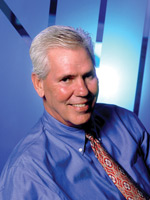
32. Albert P. (Skip) Viragh—$28 million to Chaminade College Preparatory School. Viragh, who was 62 when he died in 2003, founded the Rydex Fund Group, a mutual-fund company in Rockville, Md. He left $28 million to Chaminade College Preparatory School in St. Louis. The money will finance a new center for the arts, which the school plans to name for him. A 1959 graduate of the school, Viragh learned he had pancreatic cancer only a short time before his death; due to the severity of his illness and the speed with which it progressed, there was no time to plan any charitable bequests in his will. Instead, he told his brothers—Bob, who graduated from Chaminade in 1961, and Mark, who graduated from the school in 1966—that he wanted to leave money to Chaminade and left it up to them to handle the bequest. So, in 2007, the brothers and the rest of the Viragh family contacted the school, asking Chaminade officials what they needed most.
The answer was an arts center. After a lengthy process, school officials determined it would cost about $25 million to build the kind of center they wanted, and they took that figure to the Viragh family. The family agreed to give that amount, plus an additional $3 million to endow the center, which is scheduled to open in the summer of 2011.
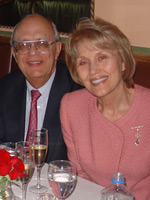
33. Theodore and Vada Stanley—$27.9 million to the Stanley Family Foundation and Stanley Medical Research Institute. Theodore Stanley founded MBI, a Norwalk, Conn., company that develops and markets collectible items. Ted Stanley, 78, and his wife, Vada, 76, gave $15.5 million to the Stanley Family Foundation, in Norwalk, Conn., which primarily supports mental-health services, as well as education and the arts. The couple established the foundation in 1985. In addition, they donated $10 million to the Stanley Medical Research Institute, in Chevy Chase, Md., to support research into and treatment of mental illness. The couple also gave a total of $2.4 million to approximately 60 nonprofit groups, including AmeriCares, in Stamford, Conn.; Boys & Girls Clubs of America, in Atlanta; Friends of Children Incorporated, in Woodbury, Conn.; the Fuller Center for Housing, in Americus, Ga.; the Glimmer of Hope Foundation, in Austin, Texas; the International Rescue Committee, in New York; Trickle Up, in New York; and other charities.
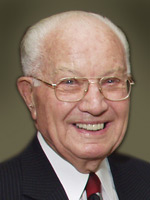
34. Arthur Hodson—$27 million to Taylor University and Indiana Wesleyan University. Hodson was a retired chairman of Upland Bank, which later became Star Financial Bank, now in Fort Wayne, Ind., and a former chemical engineer at Union Carbide's Cleveland location. Hodson, who died in 2007 at 94, left $13.8 million to Taylor University in Upland, Ind. Hodson earmarked about $6 million for endowment, through which the money will support scholarships, a professorship in business, and other programs. The remainder will go toward a new science building. Hodson attended Taylor but graduated from Purdue University in 1936 with a bachelor's degree in chemical engineering.
In addition, Hodson bequeathed $10.6 million to Indiana Wesleyan University in Marion for endowment and left $2.6 million to White's Residential & Family Services, a Wabash, Ind., charity that provides housing for children and young adults, as well as foster care and adoption services. The money will go toward endowment. Hodson also left money to Upland United Methodist Church and to Upland Friends Church. The $27 million in charitable bequests account for the bulk of Mr. Hodson's estate.
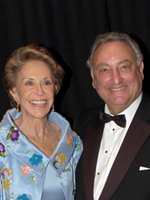
35. Sanford I. and Joan H. Weill—$26 million to various arts, education, and health groups. Sanford Weill, 76, retired in 2006 as chairman of Citigroup. He and his wife, Joan, 75, pledged approximately $26 million to arts groups, education organizations, and health charities. No details were available about a payment schedule.
Sanford Weill is chairman of the board of trustees of Carnegie Hall and of the board of directors of the National Academy Foundation. He also serves on the boards of NewYork-Presbyterian Hospital, Memorial Sloan-Kettering Cancer Center, and the White Nights Foundation of America. Joan Weill is chairwoman of the board of trustees of the Alvin Ailey American Dance Theater and of the board of trustees of Paul Smith's College, in Paul Smiths, N.Y. She also serves on the board of the White Nights Foundation of America. Although the Slate 60 does not count or include payments made on past pledges, in 2009 the Weills gave $170 million in cash to Weill Cornell Medical College and to Cornell University to fulfill what was originally a $300 million pledge they made to those institutions in 2007.
The couple originally planned that the pledge would be paid by their estate upon their deaths, but in 2008 Cornell officials asked the Weills to pay on their pledge early so that construction of a new research building would not be stalled. The Weills and the university agreed that the $170 million payment would fulfill the full pledge.
Sanford Weill said in April that the recession prompted him and his wife to agree to make the reduced payment rather than hold on to the money, and to encourage other donors to give money to the medical school and the university.
"Lots of institutions were having problems with their investment portfolio in the second half of the year and everybody was sort of frozen and nobody was doing anything except feeling bad," said Weill. "So I thought it was a very important time for us to do something that would be dramatic."
36. B. Charles and Joyce Eichhorn Ames—$25 million to Illinois Wesleyan University. Charles Ames retired in 2007 as vice chairman of Clayton Dubilier & Rice, a private-equity firm in New York and London. Ames and his wife, Joyce, pledged $25 million to Illinois Wesleyan University. Of the total committed, $10 million will endow professorships. University officials have not said how the remainder of the money will be spent, and no details were available about a payment schedule. Charles Ames graduated from the university in 1950, and Joyce Ames graduated in 1949. Not including this recent pledge, the couple has given the institution a total of $14 million.
36. John A. and Jenny Paulson—$25 million toNew York University's Leonard N. Stern School of Business and Southampton Hospital Foundation. John Paulson founded Paulson & Company, a New York hedge fund. The Paulsons pledged $20 million to New York University's Leonard N. Stern School of Business. Of the total pledged, $11 million will be used for campus renovations, $5 million will support two professorships, and $4 million will go toward scholarships. No details were available about a payment schedule.
A 1978 graduate of the business school, John Paulson serves on its board of overseers. The Paulsons also gave $5 million to the Southampton Hospital Foundation for a new emergency department, which is scheduled to open in May.
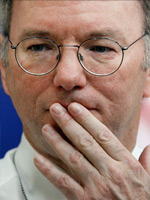
36. Eric E. and Wendy Schmidt— $25 million to Princeton University. Eric Schmidt is CEO of Google. The Schmidts pledged $25 million to Princeton University to establish and endow the Eric and Wendy Schmidt Transformative Technology Fund, which will support the development of new technologies that could eventually be used to improve research in engineering and the natural sciences. The Schmidts and the university declined to provide details about a payment schedule. Eric Schmidt graduated from Princeton in 1976 with a bachelor's degree in electrical engineering. He is chairman of the New America Foundation's board of directors and serves on the advisory board of the Computer History Museum. Wendy Schmidt serves on the board of trustees of the Natural Resources Defense Council.
36. Bernard and Anne Spitzer—$25 million toCity College of New York. Bernard Spitzer founded Spitzer Engineering, a real-estate development and management company in New York. Anne Spitzer teaches English literature at Hunter College, an institution within the City University of New York system. Bernard, 85, and wife, Anne, 82, pledged $25 million to the City College of New York to benefit its school of architecture. The money will support undergraduate scholarships, graduate fellowships, faculty research, and other programs in the architecture school. No details were available about a payment schedule. Bernard Spitzer graduated from City College in 1943 with a bachelor's degree in engineering. He serves on the board of the City College 21st Century Foundation.
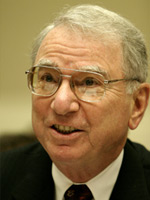
40. Irwin M. and Joan K. Jacobs—$24.3 million to the Joan and Irwin Jacobs Fund at Jewish Community Foundation of San Diego. Irwin Jacobs founded Qualcomm, a wireless-communications company in San Diego. Jacobs, 76, and his wife, Joan, 77, gave $24.3 million to the Joan and Irwin Jacobs Fund, their donor-advised fund, at the Jewish Community Foundation of San Diego. Through the fund they awarded grants to numerous nonprofit organizations. Their top five grant recipients last year were the San Diego Symphony; the University of California at San Diego's Jacobs School of Engineering; the Reuben H. Fleet Space Theater and Science Center, in San Diego; the Salk Institute for Biological Studies, in San Diego; and the University of California at San Francisco's School of Medicine.
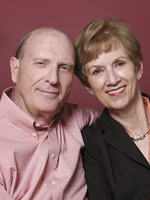
41. Jerry W. and Judith S. Davis—$22 million to the University of Florida Shands Cancer Center and the Tennessee Tech School of Nursing. Jerry Davis is a private investor and a former chairman of Computer Management Sciences in Jacksonville, Fla. Davis, 65, and his wife, Judith, 67, pledged $21 million, of which $3 million has been paid in cash, to the University of Florida's Shands Cancer Center in Gainesville. Of the total committed, they have directed $20 million toward research and $1 million to support the center's hospital. The remaining $18 million will be paid out over the next nine years in annual increments of $2 million. Both of the Davises are cancer survivors. Davis was treated at the Shands Center and serves on the board of directors of Shands HealthCare. He earned a bachelor's degree in journalism from the university in 1968.
In addition, the couple gave $1 million to the Tennessee Tech School of Nursing, in Cookeville. The money will support scholarships for 10 students each year who are from Oneida, Tenn., Judith Davis' hometown. Jerry Davis also serves on the boards of the University of Florida Foundation and the University of Florida Investment Corp., both in Gainesville, and the First Jax Foundation in Jacksonville. Both Davises serve on the board of the Tennessee Tech Foundation.
41. John W. and Janice B. Fisher—$22 million to theIvy Tech Foundation. Fisher was a retired chairman of the Ball Corp., an international packaging company. Janice Fisher is the daughter of Edmund B. Ball, one of the five brothers who founded Ball Bros. Glass Manufacturing Company, the forerunner to the Ball Corp. John Fisher, who died in June at 93, and Janice gave a building valued at more than $20 million to the Ivy Tech Foundation, the fundraising arm of Ivy Tech Community College in Muncie, Ind.
Included in the donation of the Fisher Building, which was the former headquarters of the Ball Corp., is the land it sits on, plus all furnishings and parking lots attached to the facility. The couple donated the building shortly before John Fisher's death from leukemia. The structure will house classrooms, computer labs, faculty offices, and student study spaces, lounges, and collaborative work areas.
Although Fisher retired in 1986, he kept an office in downtown Muncie, near Ivy Tech's campus. As a result of this proximity, he and his wife became acquainted with the college and its students and became donors to the college through personal gifts and through the Ball Bros. Foundation. In addition, Fisher bequeathed $2 million to Ball Memorial Hospital Foundation in Muncie, Ind. He earmarked half of the gift for medical education and the remaining $1 million can be used for any purpose approved by the hospital's board. Mr. Fisher served on the hospital's board of directors for 55 years.
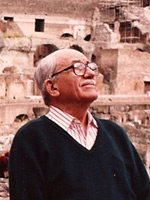
43. M.A. Douglas—$21 million to the University of California at Irvine Medical Center. Douglas founded Income Property Services, a real-estate-development company in Orange, Calif. Douglas, who died in 2008 at 97, bequeathed $21 million to the University of California at Irvine Medical Center, also in Orange. The money will go toward the medical center's new hospital. Douglas was never a patient at the hospital and had no ties to it, according to a spokesman for the medical center. His office was one block away, and he passed it every day on the way to his real-estate company. Before his death, he left the decision as to where his bequest should go up to the trustees of his estate. The only stipulation Douglas made was that the money benefit people in Orange County, Calif., where most of his business was centered.
43. Stewart A. and Linda R. Resnick—$21 million to theCalifornia Institute of Technology. The Resnicks manage Roll International Corp., a Los Angeles holding company for Paramount Farms, a tree-farming business; Fiji Water; POM Wonderful, a grower of pomegranates and manufacturer of pomegranate juice; and Teleflora, a service for ordering flowers by phone and online, among other companies. They pledged $21 million to the California Institute of Technology, in Pasadena, for its new Sustainability Institute, which will seek new science and engineering developments designed to help solve global energy and climate problems. The center will be named for the Resnicks. The couple paid $1 million toward their commitment last year and plan to pay the remainder over the next several years. Stewart Resnick has served on the institute's Board of Trustees since 2005.

45. Henry P. and Rebecca L. Conn—$20 million to the University of Louisville. Henry Conn is the former executive vice president of A.T. Kearny, an international management-consulting company with headquarters in Chicago.
The Conns, both 68, pledged $20 million to the University of Louisville to establish the Conn Center for Renewable Energy and Environmental Stewardship. The Conns have not yet decided on a payment schedule. Discussions about the gift began a few years ago, when Henry, who holds three degrees from the university and serves on its board of trustees, was searching, along with Rebecca, for a way to leave a big mark through their philanthropy. Henry Conn, now a writer and consultant on energy issues who lives in Atlanta, became convinced that the University of Louisville could become a leader in developing new forms of energy. He says it is critical that the United States assume a key role in such research: "It's kind of a Sputnik moment right now."
The Conns thought about making the gift anonymously but then decided lending their name made more sense, given the active role Henry Conn hoped to play. Today, Conn is trying to help the university raise money from corporations. "My vision is grand," he says, adding, with a laugh: "The dean probably feels like crawling off somewhere when I talk about it."
In addition to their support for the University of Louisville, the Conn made gifts totaling at least $20,000 to the Special Olympics, the Salvation Army, and roughly 10 other groups. Henry Conn says the couple had intended to cut back their support to other charities when they made the university gift, but the recession's toll on nonprofit groups prompted them to continue giving.
45. Jay A. Precourt—$20 million to Stanford University. Precourt is chairman of Hermes Consolidate, an oil company in Denver. He pledged $20 million to Stanford University to support the Precourt Institute for Energy, a research center where scientists are studying ways to provide affordable and environmentally sustainable energy. No details were available about the donor's schedule for paying the pledge. Precourt graduated from the university in 1959 with a bachelor's degree in petroleum engineering, and a master's in the same field in 1960. In 2006, he pledged $30 million to Stanford to establish the energy institute.
45. Virginia Bernthal Toulmin—$20 million to the Dayton Foundation. Toulmin is a former nurse and businesswoman whose late husband, Harry A. Toulmin Jr., was an international patent lawyer. Toulmin's father was the lawyer who secured the Wright brothers' patent for their ground-breaking "flying machine." Toulmin pledged approximately $20 million to the Dayton Foundation in Ohio to endow a fund, in the Toulmins' name, that will support local nonprofit groups. Toulmin placed no restrictions on the donation, which the grant-maker will receive on her death. Toulmin now lives in Florida, but spent more than 40 years in Dayton.
"Harry and I had a very happy life together in Dayton," she said in a news release. "He grew up in the region and made a very successful living here. We owe Dayton something in return."
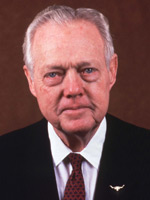
48. W.A. "Tex" Moncrief Jr.—$18 million to the University of Texas at Austin. Moncrief is president of Montex Drilling and of Moncrief Oil in Fort Worth, Texas, which were founded by his father, W.A. "Monty" Moncrief. Moncrief, 89, gave the University of Texas at Austin $18 million to endow simulation-based engineering programs at the university's Institute for Computational Engineering and Sciences. Simulation-based engineering involves the use of computer-simulation programs to help engineers in their work. Moncrief graduated from the university in 1942 with a bachelor's degree in petroleum engineering. He served on the University of Texas system's board of regents from 1987-93.
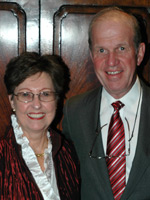
49. William G. and Ernestine R. Lowrie—$17 million to Ohio State University. William Lowrie is a retired deputy chief executive of BP Amoco. William Lowrie, 66, and his wife, Ernestine, 69, pledged $17 million to Ohio State University for its Department of Chemical and Biomolecular Engineering. The Lowries have paid $5 million of the gift and hope to pay the rest by 2014. The university has named the department for the couple.
Of the total committed, $11 million will go toward the construction of a new laboratory building; $5 million will endow a new professorship and education and research programs; and $1 million will endow a professorship for an untenured faculty member in chemical and biomolecular engineering. The untenured professorship will be named for the late H.C. (Slip) Slider, who was a professor at the university and a mentor to William Lowrie.
"He had a tremendous impact on me and got me directed and interested. If he hadn't been there and done that, it's questionable whether I'd be in a position to give this kind of a gift," said Lowrie, who graduated from the university in 1966.
Mr. Lowrie serves on the university's board of trustees and is leading the committee charged with raising additional money for the new building. The Lowries decided to attach their name to the gift rather than give anonymously, because, said William Lowrie, "I don't think giving a gift like this anonymously helps with fundraising."
Aside from the Slider professorship, the couple placed only one restriction on the gift: that the university not change the name of the new building, which will replace the current Koffolt Laboratories facility. That building was named for the late Joseph H. Koffolt, another chemical and biomolecular department professor who influenced Lowrie. In no uncertain terms, said the donor, "Joe's name stays on the building."
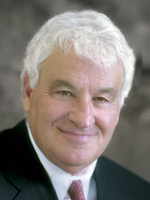
50. B. Thomas Golisano—$16.2 million to the B. Thomas Golisano Foundation. Golisano founded Paychex, a Rochester, N.Y., company that provides businesses with payroll and other services. Golisano, 68, gave $10.2 million to the B. Thomas Golisano Foundation, in Pittsford, N.Y., to support programs and services for developmentally disabled people, the grant-maker's main giving priority. He established the foundation in 1985. The foundation gave a total of $700,000 in 2009 and, including this newest donation, has assets of $25 million.
In addition to the money he put into his foundation, Golisano pledged $4 million, of which $2 million has been paid, to Ave Maria University in Florida for an indoor athletics facility. He also gave $2 million to the Clinton Global Initiative, an annual philanthropy event in New York that is the brainchild of former President Bill Clinton.
51. Alfred C. Warrington IV—$16 million to the University of Florida's Warrington College of Business Administration. Warrington retired in 1990 as a managing partner at the now-defunct accounting firm Arthur Andersen and went on to found companies in Houston and Atlanta. Warrington pledged $16 million to the University of Florida's Warrington College of Business Administration to establish an endowment to support faculty salaries and benefits. Details about a payment schedule were not available.
The business school was named for Warrington in 1996, when he donated $11 million. He graduated from the university in 1958 with a bachelor's degree in business administration.
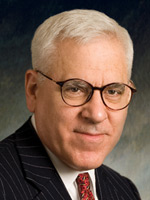
52. David M. Rubenstein—$15.8 million to the Lincoln Center for the Performing Arts and Duke University. Rubenstein, 61, co-founded the Carlyle Group, a private-equity firm in Bethesda, Md. He pledged $10 million to the Lincoln Center for the Performing Arts for its redevelopment project. Rubenstein serves as a vice chairman of the center's board of directors and led the center's recent capital campaign. Details about a payment schedule were not available.
In addition, he pledged $5.8 million to Duke University for its Sanford School of Public Policy. Details about a payment schedule were not available. Rubenstein graduated from Duke in 1970 and serves on the university's board of trustees.
53.Arlys Streittmater Conrad—$15.5 million to the University of Illinois Foundation Conrad worked for S & C Electric Co. in Chicago. Most of her wealth is from investments in that company's stock. She also managed her family's farm in Speer, Ill. Conrad, who died in 2007 at 85, left $15.5 million to the University of Illinois Foundation for the University of Illinois Urbana-Champaign. The money will endow the College of Agricultural, Consumer, and Environmental Sciences, as well as the College of Liberal Arts and Sciences. Conrad graduated from the university in 1944 and had previously given the institution $1 million to endow scholarships.

54. Steven L. and Carol Aaron—$15 million to the Dallas Jewish Community Foundation. The Aarons own Stevens Transport, a freight company in Dallas. They pledged $15 million to the Dallas Jewish Community Foundation for the couple's Aaron Family Designated Fund. The foundation will receive the money upon the death of the Aarons. No details were available about whether the pledged money is earmarked for any specific cause or purpose, but through their designated fund, the couple has supported a variety of groups, including the Children's Medical Center of Dallas, Congregation Shearith Israel, also in Dallas, and the Jewish Federation of Greater Dallas, among other organizations.
55. Robert B. Rust Jr.—$14 million to the Virginia Military Institute Foundation. Rust, who died last April at 96, was a retired civil engineer with Southern Railway, now Norfolk Southern Railway. He bequeathed approximately $14 million to the Virginia Military Institute Foundation in Lexington for scholarships. Rust graduated from the Virginia Military Institute in 1934. A scholarship recipient during the Depression, Rust never forgot that he could not have afforded to attend the institution were it not for the donations of earlier philanthropists. When he made his estate plans in 1997, he earmarked the money for that very purpose and wrote in a document finalizing his plan for the bequest that the scholarship recipients "shall be of good character, have superior academic potential, and have need for financial assistance."
56. Jeffrey S. Skoll—$13.7 million to the Skoll Foundation. Skoll was the founding president of eBay. He is also the founder of Participant Media, in Los Angeles, which produces films that focus on prominent social issues. Skoll, 45, gave $13.7 million to the Skoll Foundation in Palo Alto, Calif. He established the grant-maker in 1999. Among its largest grants in 2009 were a $3.6 million donation to the Skoll Center for Social Entrepreneurship at the University of Oxford and a $2.5 million donation to the Middle East Venture Capital Fund, which is operated by the European Investment Bank in Luxembourg, to support information and communications technology companies that have originated in the Palestinian territories.
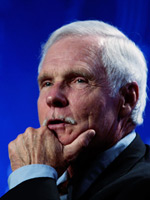
57. Robert Edward (Ted) Turner—$13.2 million to the Turner Foundation. Turner, 71, is chairman of Turner Enterprises, a private holding company in Atlanta. He founded Turner Broadcasting System and CNN and is a former vice chairman of AOL Time Warner. He gave $12.1 million in cash to the Turner Foundation in Atlanta to support the grant-maker's efforts to develop sustainable energy systems, improve water and air quality, protect wildlife habitats, and curb population growth. Turner established the foundation in 1990. In addition, Turner gave $200,000 apiece to Brown University; the Citadel Foundation, the fund-raising arm of the military college in Charleston, S.C.; and the McCallie School, a college-preparatory school for boys in Chattanooga, Tenn. He attended Brown but did not graduate and is a 1956 graduate of McCallie. He also gave a total of $500,000 to a variety of other nonprofit groups throughout the country.
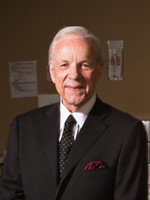
58. Conrad T. Prebys—$11.6 million to the Burnham Institute for Medical Research. Prebys founded Progress Construction and Management Company, a real estate-development business in San Diego. He pledged $10 million to the Burnham Institute for Medical Research in La Jolla, Calif., to support a drug-discovery center that will be named for him. He paid $1 million toward the pledge last year. He also gave the institute a separate donation of $50,000 to support work by its young scientists. In addition, he pledged $1.5 million to the San Diego Hospice and Institute for Palliative Medicine to establish a special fund to provide hospice services to patients who could not otherwise afford such care. Prebys has paid $500,000 toward the pledge and plans to pay the rest over the next two years.
59. Michael H. Dunn—$10.5 million to theMuseum of Modern Art. Dunn was a retired stockbroker and a rare-books dealer in Derby, Vt. Dunn, who died in 2007 at 65, left approximately $10.5 million to the Museum of Modern Art in New York. He placed no restrictions on how the money should be used, and museum officials have decided to direct the money toward the endowment and for acquisitions of art works. Dunn had been a member of the museum's board of directors for 10 years at the time of his death. Museum officials said the bequest came as a complete surprise.
59. John O. and Janet F. Haas—$10.5 million to the University of Pennsylvania. John Haas is an heir to the Rohm & Haas Co. fortune, and his wife is a physician. The Haases pledged a total of $10.5 million to the University of Pennsylvania for two professorships, to support the university's arboretum, and for Alzheimer's drug research. Of the total, $3 million will endow a professorship at the Penn Medicine at Radnor Clinic; $3 million will support the Penn Innovative Pilot Program for Alzheimer's Drug Discovery; $2.5 million will endow the director of botany post at the university's Morris Arboretum; and $2 million will endow a professorship in bioethics. Details about a payment schedule were unavailable. Dr. Haas serves as chairwoman of the advisory board for the Penn Center for Bioethics.